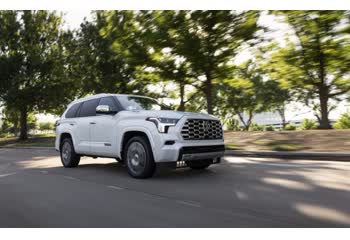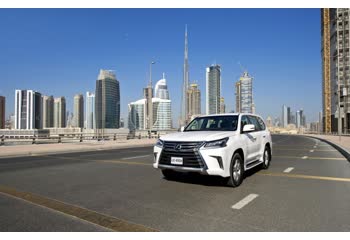Everything you need to know about specifications and performance - Toyota Sequoia 2017 - 5.7 V8 VVT-i (381 Hp) 4WD ECT-i

Overview:
What is the engine capacity of a Toyota Sequoia 2017?
The engine capacity of the Toyota Sequoia 2017 is 5663.
Toyota Sequoia 2017 How many horsepower?
The engine power of the Toyota Sequoia 2017 is 381 Hp @ 5600 rpm..
What is the Toyota Sequoia 2017 engine?
Toyota Sequoia 2017 engine is 3UR-FE. (Click to see other cars using the same engine)
How much gasoline does a Toyota Sequoia 2017 consume?
The Toyota Sequoia 2017 consumes 16.8 liters of gasoline per 100 km
What is the recommended oil for a Toyota Sequoia 2017 engine?
The recommended oil for a Toyota Sequoia 2017 car engine is 5W-30.
What type of camshaft transmission system is used in a Toyota Sequoia 2017 engine?
chain is used to transmit motion.
General:
Engine:
Performance:
Space:
dimensions:
Powertrain, Suspension and Brakes:
See also

Other generation.
Its production began in 2000 until 2005

Other generation.
Its production began in 2022 until Now

Same engine. (3UR-FE).
Its production began in 2007 until 2010

Same engine. (3UR-FE).
Its production began in 2017 until 2021

Write a comment